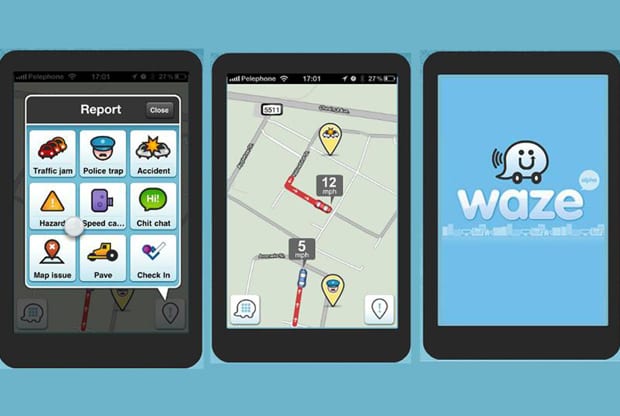There’s a reason fleet management is big business these days: skyrocketing gas prices and traffic jams are huge pain points for field service operators. But what if field service companies had a simple — and free — solution that promises to help minimize the pain?
They do: Waze, the developer of a popular navigation app that Google bought on Wednesday for $1 billion. Although aimed primarily at consumers, Waze could take the load off dispatchers by putting service techs in the driver’s seat when it comes to finding the quickest route to the next job.
Easy to Use, Easy to Like 
How does Waze work? It tracks via GPS the real-time movements of its active users to identify traffic congestion, accidents, road hazards and weather conditions that are contributing to a traffic slowdown or closed roadway. For example, if two Waze users driving to work suddenly slow down on a highway, the app instantly updates its maps to reflect that. When they pick up speed again, the app knows that the roadblock has been cleared. Traffic fanatics can also help out other Waze users by reporting via the app any accidents, speed traps or hazardous conditions that they encounter.
For this reason, Waze is billed as the only user-generated mapping service around — and with 50 million subscribers and counting, that’s a lot of traffic reporting.
So what can Waze do for field service? Plenty.
Fill’er Up, For Less
As everyone knows, gas isn’t exactly cheap these days. While there are ways to reduce fuel costs — hybrid vans, less time spent idling — identifying the most efficient routes to job sites is key, which is precisely what
Waze claims to do. “In general, routes that keep vehicles driving at a consistent speed with few stops or traffic lights — such as those that utilize the highway rather than surface roads — are the most economical,” wrote Megan Webb-Morgan, a former writer for ResourceNation.
There’s another fuel-saving feature to Waze: a list of nearby gas stations and the day’s price-per-gallon rate, courtesy of users who take the time to update the app.
Improve On-Time Arrivals
It’s one of the biggest complaints customers have: hours-long service windows and, still, a tech arrives late. One way to mitigate their frustration is to identify the efficient routes from job to job. The problem is, traffic conditions change minute by minute so even determining the shortest route doesn’t necessarily mean it will be the quickest. Here’s where Waze’s real-time updates have so much promise: drivers can be instantly alerted to sudden congestion and rerouted.
Late or Not? Let Everyone Know
Delays are unavoidable, even with the best technology. Waze lets service techs notify customers by text message what route they’re taking and what their estimated time of arrival is — even if it’s just the courtesy of relaying that they’re on time. Fleet managers can also connect with their techs on Facebook to sync arrival times and track the progress of their fleets. These added social features also serve as a selling point when assuring customers of punctuality.
Get Total Buy-In
Adopting new technology can be problematic for field service — an industry long dominated by clipboards, spreadsheet and paper invoices. And it can be especially challenging when older techs are asked to go digital. But Waze is easy to install and easy to use, making the transition to mobile navigation a whole lot easier for everyone involved.
Can Waze live up to its hype? It’s got 50 million users who think so — and at least a few giants that apparently do too. A lot remains to be seen, however. One question that time will answer: exactly how Google Maps and Waze will work together — or not at all.

Share this: